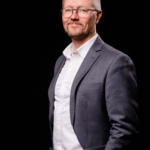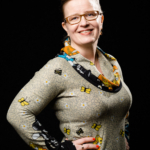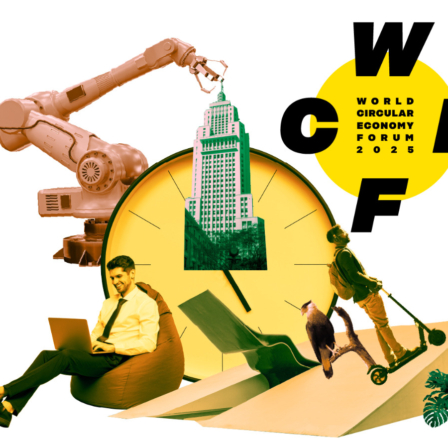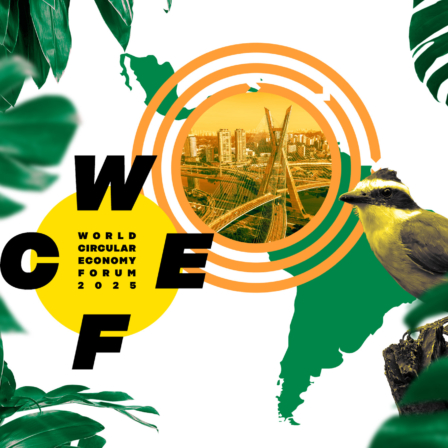The World Circular Economy Forum has opened in Toronto, Canada, in a troubled but hopeful time. The WCEF is being held right after the ominous new IPCC report on the climate was released and right before the first part of the COP15 biodiversity negotiations and COP26 climate change conference begin. WCEF2021 has the opportunity to act as the catalyst to turn the alarm from the IPCC report’s conclusions into leadership to act at COP26 and beyond.
“I hope WCEF will inspire decision makers, business leaders, investors and everyone to take leadership in the circular transition,” said Jyrki Katainen, president of Sitra during the opening ceremony.
Naoko Ishii, executive vice president and director at the University of Tokyo’s Center for Global Commons, summed up the global atmosphere of this critical period.
“We have not made sufficient progress. Only nine per cent of natural resources are returned to the production cycle, while the remainder are incinerated, buried in landfills or dumped in the ocean,” Ishii said. “We need leadership from business, government and citizens simultaneously. We need to challenge the old system and design a new model. The circular economy is everyone’s business.”
SMEs play a critical role in the circular transition
Our old linear economic model of take-make-waste is unsustainable. We need an economic model which does not focus on producing more goods, but instead is based on services such as sharing, renting and recycling. Materials are not abandoned, but with circular business models, they are used to make new products again and again.
The participants at WCEF stress these circular solutions are not only a powerful tool to mitigate climate change, they can also help tackle biodiversity loss.
Tima Bansal, the professor of strategy at the Ivey Business School, brought up the important role of small and medium sized enterprises: “SMEs are flexible, agile, good at product design” – which are all crucial for creating successful circular business models.
Jan Raes, global sustainability advisor for ABN AMRO Bank, concurs. “At the moment, the energy system is systemically designed in a linear way,” he said. “SMEs have a great opportunity in the energy transition. Batteries, solar panels and wind turbines all need to be managed in a circular approach.”
Canada urges an increased ambition
For the first time, the WCEF is being held in North America. Canada brings new energy and a unique approach to circular solutions.
“I am proud Canada is the first North American host of the WCEF,” said Christine Hogan, deputy minister, Environment and Climate Change Canada. “We need to raise our circular ambition and seize the circular opportunity.”
Canada is taking a diverse approach to the transition to a circular economy, ranging from smart city solutions to the philosophies of indigenous people. Jennifer McKelvie, Toronto City councillor, explained that the people of Toronto were leading circular activity at a neighbourhood level. The First Nations’ respect for the Earth is something to learn from and listen to everywhere.
“Circular solutions are an inherent feature of indigenous societies, not just with the economy but also in society and the environment,” explained Dakota Norris of the Gwich’in First Nation. He is a representative of the indigenous people on Canada’s Sustainable Development Advisory Council.
We need a new definition of happiness
The first day of WCEF2021 addressed some of the most pressing climate and biodiversity issues, such as plastics and the role of individuals. The threat to our planet is such that we need to rethink and redefine some of society’s old beliefs.
“We have been brought up in a system where overconsumption is the norm,” said Emma Sairanen of Finland’s Youth Council Allianssi, who is currently working at Sitra. “Now we need to find new definitions of happiness that fit the planetary boundaries.”
The end goal of the circular economy is for long-term human happiness. Michael Regan, administrator of America’s Environmental Protection Agency, said: “The task is to ensure this transition involves all people and that all communities, especially the underserved and pollution burdened, share in the public health and environmental benefits that this transformation will deliver.”
Everyone’s responsibility
Yet before we can share in the benefits of circularity we have to implement circular solutions. The IPCC report showed that we have not done enough. We need to raise our ambition level and take decisive action. Solving the climate and biodiversity crises requires leadership. We need leaders to forge new partnerships with allies from all parts of society, including governments, companies, workers, investors and non-profits.
As Sitra’s Director Mari Pantsar said, “We must all take the responsibility for leadership within the resources and scope of influence that we have. In a democracy, we all have to contribute.”
To learn more about what you can do to be a leader in the circular transition, please visit WCEF2021.
The next two days (14 and 15 September) WCEF2021 will address the interlinkages between the circular economy, biodiversity and natural resources. Participants will demonstrate how to communicate circularity, what it can look like in communities, and how companies and countries can build their way towards circularity.



















Recommended
Have some more.